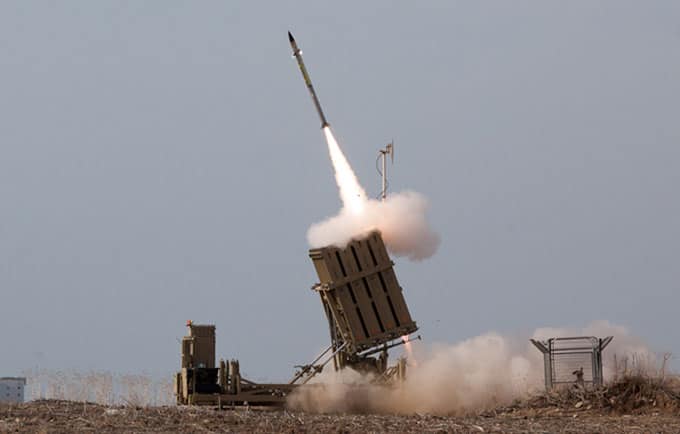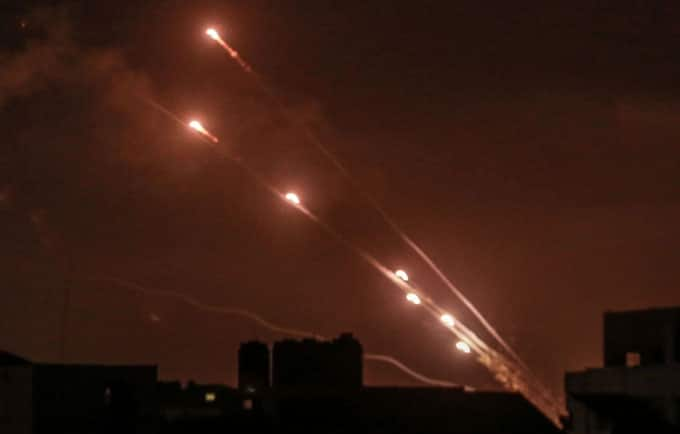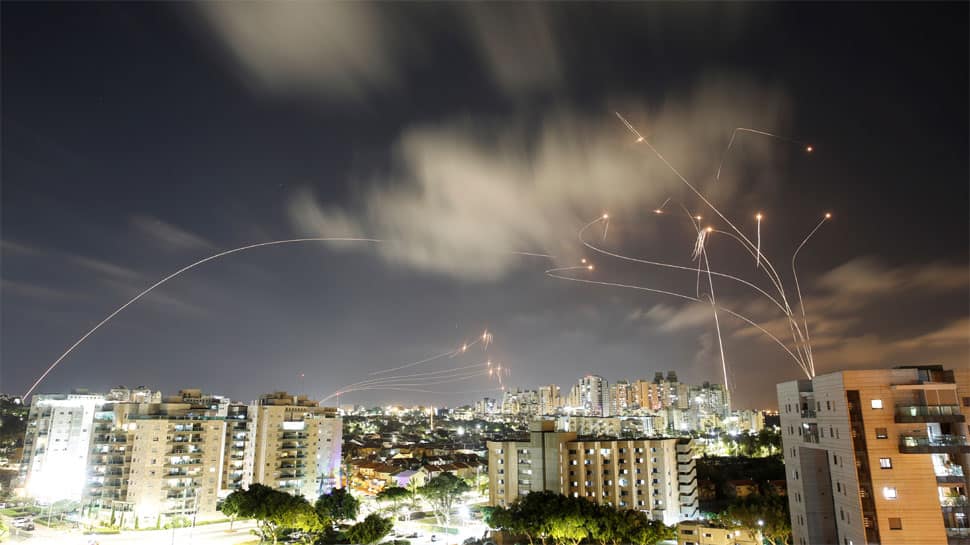New Delhi/Tel Aviv: As fighting continues between Israel and Palestine and dozens have been killed following bloodier clashes in the holy city of Jerusalem earlier this week, the Israeli Defence Forces (IDF) are heavily relying on the Iron Dome Aerial Defence System to intercept and neutralise the rockets being fired by the militant group Hamas from West Bank and Gaza.
According to the Israeli military spokesman Jonathan Conricus, Palestinian militants have fired more than 1,500 rockets from Gaza at Israel since the latest flare-up of fighting began in Jerusalem.
However, around 400 went down over Gaza, due to Israel`s Iron Dome aerial defence system that continues to intercept and destroy rockets fired by Hamas with a success rate of over 90 per cent. Seven people have died in Israel since the rocket launches began on Monday – six civilians and one soldier and several dozens in Gaza and West Bank in the counter-attack. The IDF has attacked around 600 targets in the Gaza Strip, including rocket production and storage facilities.
Israel blames radical militant group Hamas, the de facto rulers of the Gaza Strip, for any attacks from Gaza. The group is classified as a terrorist organization by Israel and the European Union.

(The Iron Dome Aerial Defence System developed by Rafael Advanced Defence Systems and Israel Aerospace Industries/Reuters)
What Is an Iron Dome?
An Iron Dome is Israel`s Aerial Defence System. Developed by Rafael Advanced Defence Systems and Israel Aerospace Industries, it is a mobile all-weather air defence system designed to intercept and destroy short-range rockets and artillery shells fired from shorter distances of 4 kilometres up to 70 kilometres away before they could even hit targets in an Israeli populated area.
It can be operated in all weather conditions including fog, dust storm, low clouds and rain. I-DOME is a mobile version of the system, which can be deployed on a single truck, while C-DOME is a naval version.
The Aerial Defence System protects the population and critical assets and can be strategically placed to reduce collateral damage. It can easily detect, analyses and intercept a range of incoming threats, including C-RAM, precise guided missiles, cruise missiles, unmanned aerial vehicles and air-breathing threats.
The system has so far intercepted more than 2,000 incoming targets with a success rate of over 90%.

(Iron Dome anti-missile system fires to intercept rockets fired by Hamas towards Israel/Reuters)
How Iron Dome came into existence?
The firing of rockets by Hezbollah during 2006’s Second Lebanon War led to the development of the Iron Dome. Nearly 4,000 rockets, mostly of the short-range, were fired on Haifa and other northern regions of Israel.
Iron Dome Aerial Defence System was made operational by the Israeli Air Force (IAF) in March 2011. In November 2012, Israel installed the fifth Iron Dome battery at Gush Dan in response to the rocket attacks on the Tel Aviv area.

(Israel’s Iron Dome anti-missile system fires to intercept a rocket launched from the Gaza Strip towards Israel/Reuters)
There are currently 10 mobile Iron Dome systems in use in Israel. according to Rafael Advanced Defence Systems, which develops military and defence technologies for the Israeli Defence Forces (IDF), a single battery can protect a medium-sized city and intercept rockets fired from a maximum of 70 kilometers away.
Israeli military experts believe that 13 systems would be needed in order to defend the entire country.
Live TV






